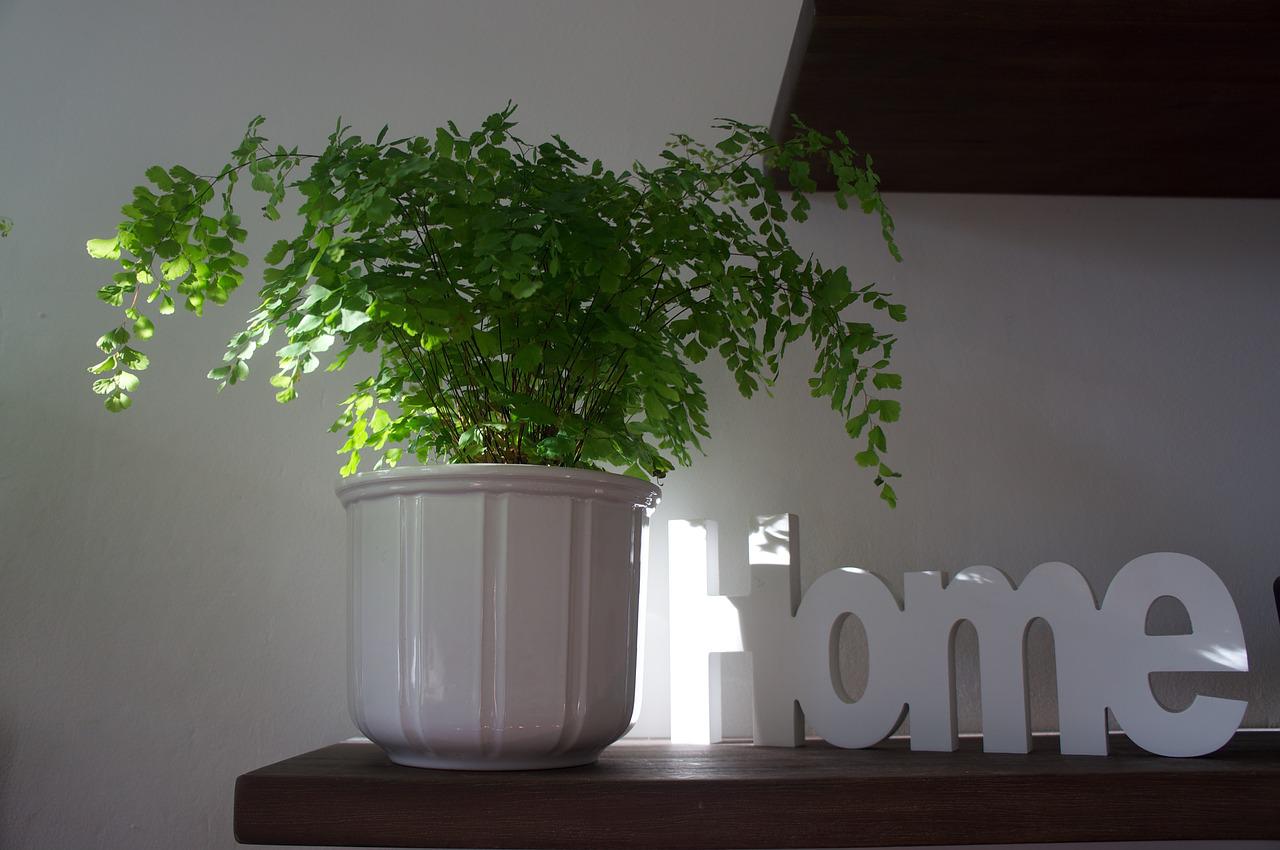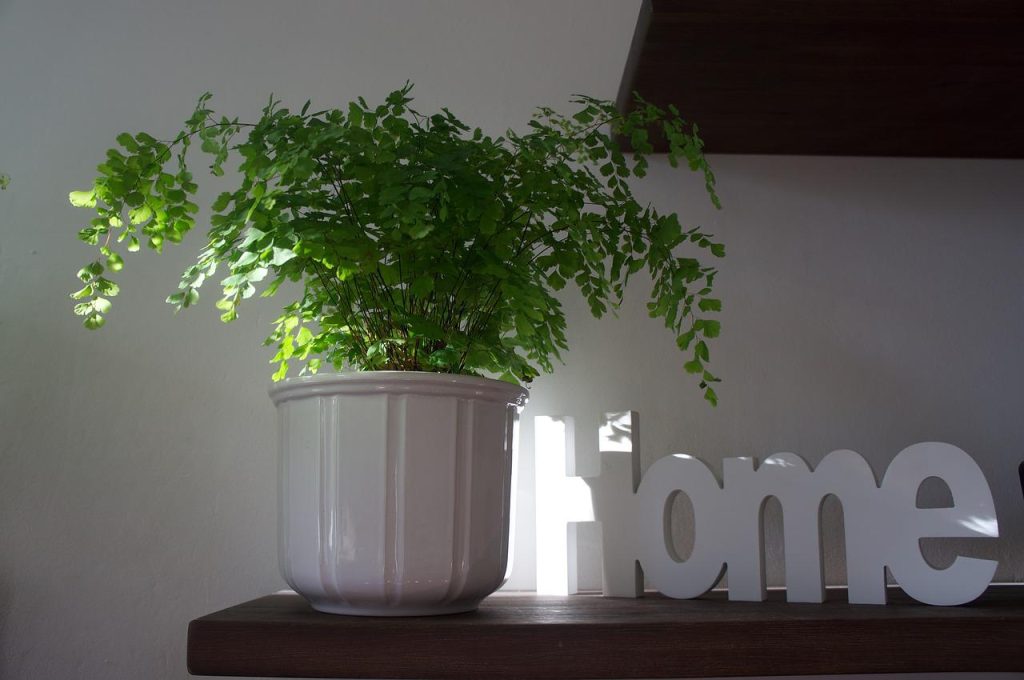
Help keep your indoor plants healthy by making sure they are well fed with the right type of plant fertilizer. Photo: Claudia Felbermayer / Pixabay
Good Earth Plant Company loves sharing our best tips on indoor plant selection and care with our plant-loving friends. Our advice on growing orchids was one of our most popular blog posts this year.
The people have spoken. We’re all about giving the people what they want! The next step in developing your personal horticulture skills is learning how to feed and fertilize (the same thing) indoor plants.
Yes, plants get hungry and need food. But plants can’t speak up and whine or beg when they’re hungry – which is a good thing if you have a chowhound or kitty making noise to get their treats. But plants still communicate in subtle ways you can learn to recognize, and if you know how fertilizing works you can establish a feeding routine to address their needs and keep them well-fed and healthy.
A Word First About the Weather
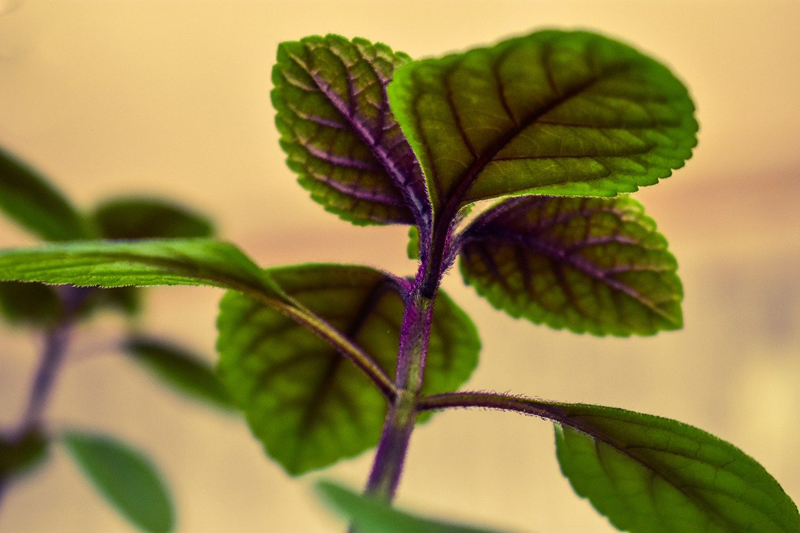
Indoor plants in warm climates that receive a lot of light need more fertilizer to stay healthy. Photo: Michel / Pixabay
Before we get to the details, our advice is different to our readers in the San Diego region and other warm climates where it doesn’t get cold enough to have outdoor frost. In most other places (before global warming anyway), plants slow their growth in the fall and winter months. Stop feeding them when fall starts, and don’t start again until early spring.
In San Diego and more temperate or tropical climates, you still only fertilize indoor plants in the spring, summer and fall. But you should lighten up on your feeding schedule because your indoor plants will get less light exposure in fall and winter, and their growth will slow down. Apply your fertilizer at half strength. No need to overfertilize.
Good Earth Plant Company isn’t trying to grow or enlarge plants for our clients. We are maintaining their size and good health. We don’t want them to grow beyond their decorative containers. Instead, after our plant styling is completed, we are “detailing” the plants more than anything else. Like a lot of people, not watering is sometimes our biggest challenge!
For indoor plants, our horticultural technicians fertilize three times a year. We use the commercial brands Dynagrow and sometimes Miracle-Gro. Before we install plants, we remove the osmocote growers typically use. Osmocote is a fertilizer encased in small beads sprinkled on the topsoil and dissolves over time. We don’t need any extra fertilizer. And in the beginning, all newly bought plants have enough fertilizer in the soil to go three to six months.
For outdoor plants, we fertilize more frequently. During warm summer months, we might fertilize twice per month.
What Do Fertilizer Numbers Mean?
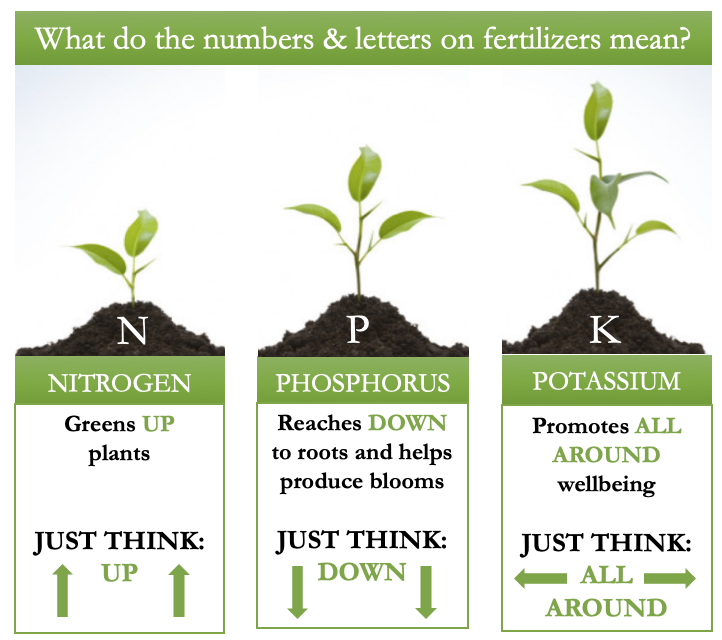
You don’t have to be an expert on NPK numbers but it’s good to know the basics. Graphic: DCX Fertilizer
Most common indoor plants have similar fertilizer requirements, so it’s fine for new plant parents to use the same fertilizer. Two exceptions you need to know about are orchids and African violets. There are specific fertilizers for these common indoor plant favorites, and we recommend you use them.
Houseplant fertilizers have their own system of macros and micronutrients, just like the foods humans eat. Humans track carbs, protein, fats, fiber, salts, and minerals. With plants, the three macros you need to know are nitrogen, phosphorous, and potassium. They will be listed on all commercial fertilizers. Look for the NPK numbers. They represent the percentage of each of those nutrients. The indoor plant fertilizer’s macros will be different than the own you use outside on trees or lawns because those plants have different nutritional needs. Choose a fertilizer formulated specifically for house plants.
Think of nitrogen like protein, phosphorous like carbs, and potassium (the K) like fats. Plants that flower need more energy, so the middle number is slightly higher. Otherwise, even numbers are fine for your indoor plants, such as 10-10-10 or 20-20-20.
Go With Liquid or Granular Plant Food?
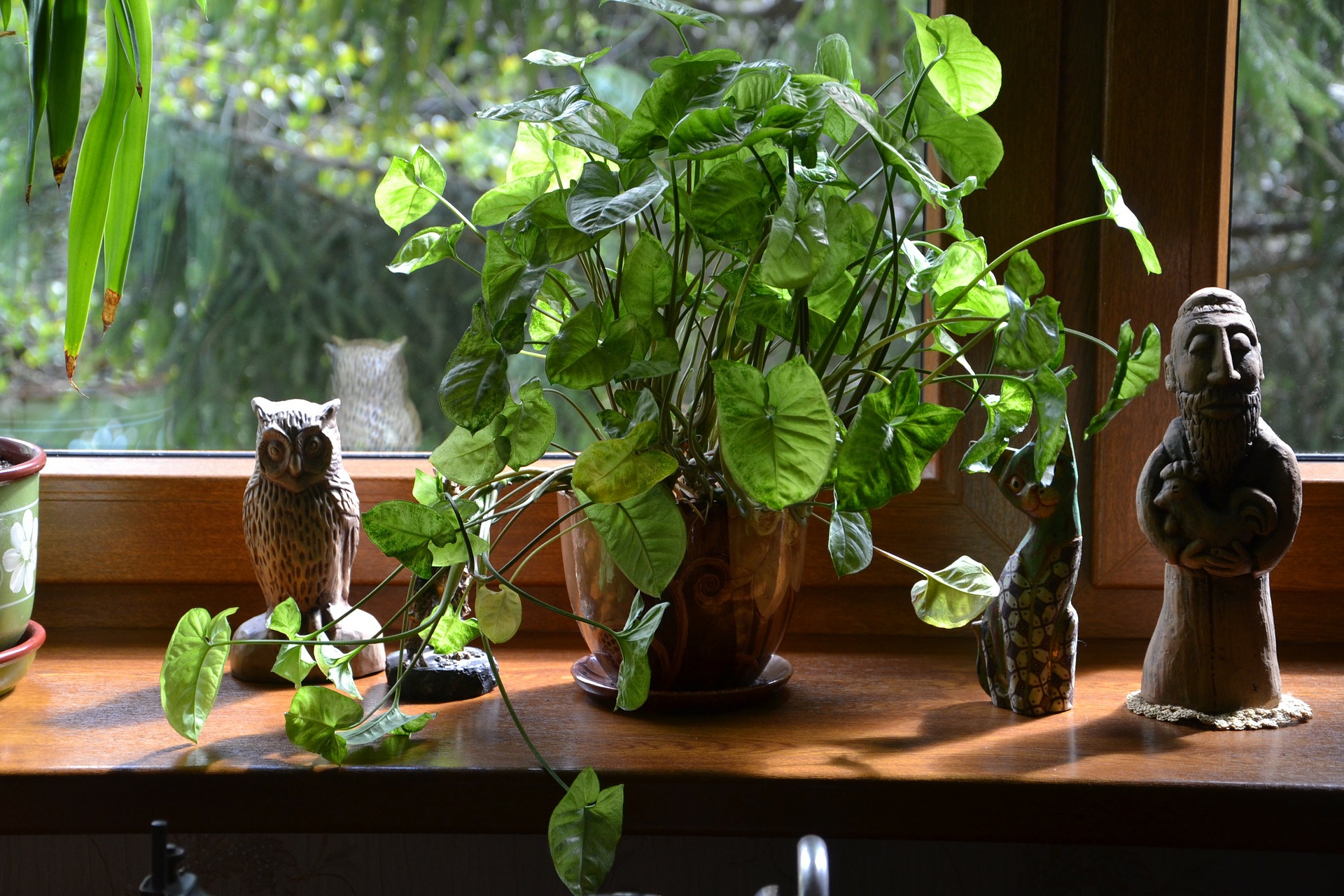
Our preferred method to feed plants is liquid fertilizer applied to the leaves, or a foliar application. Phjoto: Kropekk / Pixabay
Either liquid or granular fertilizers are acceptable choices, as long as their ingredients come from natural sources, and not lab created chemicals. Choose an eco-friendly source of food for your plants, just like you should for yourself and your pets. Look at the ingredient list. If the label doesn’t describe what the fertilizer is made from, it’s probably made in a lab. Avoid this. Common sources are things like kelp, fish emulsion, liquid bone or blood meal, rock phosphate, worm or compost tea.
Liquid fertilizers need to be used more frequently than granular fertilizers, but they also help you avoid the risk of fertilizer burn from granules sprinkled on top of the soil. Plants should be fertilized when the soil is damp. Using liquid fertilizer meets this requirement.
There are time-release versions of fertilizer, mostly sticks or pellets you plug in and forget about. They are convenient, but none are made from organic ingredients. Good Earth Plant Company doesn’t recommend them.
Manufacturers want you to use up their product more quickly. We apply fertilizer at half the recommended mixture.
What About DIY Fertilizer Formulas?
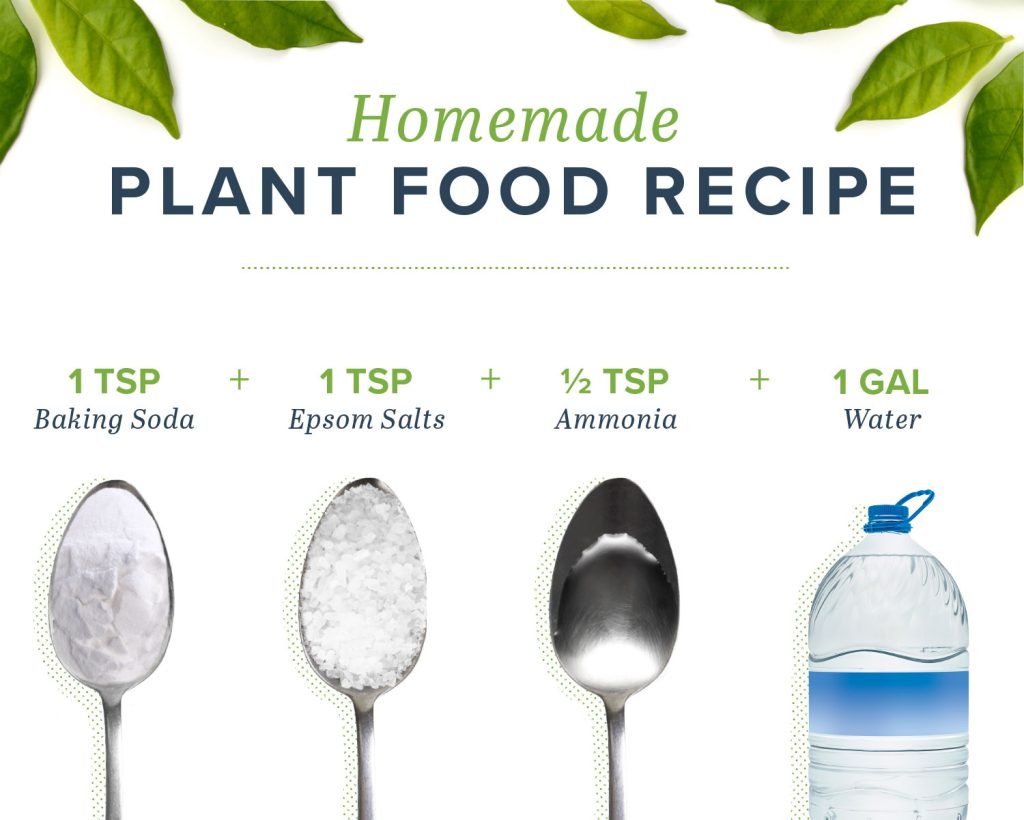
You can create a simple plant food with common home ingredients. Photo: Courtesy Pro Flowers
We’ve heard about people using eggshells, coffee grounds, banana peels, black tea, and even (we can’t make this up) human placenta and urine show up as recommendations for making homemade indoor plant fertilizers. Especially if you are a beginner, your Good Earth Plant Company horticulturalists urge you to just say no. You have no real idea what ratio of nutrients you’re putting on your plants.
If you have young children or pets in your home, the smell of these items can draw unwanted attention or consumption. Imagine what these items might smell like. We see a lot of these items dumped into container plants by careless people, and we promise it’s not pretty.
However, I’m a rule breaker. I do like using banana peels for my outdoor staghorn ferns at home.
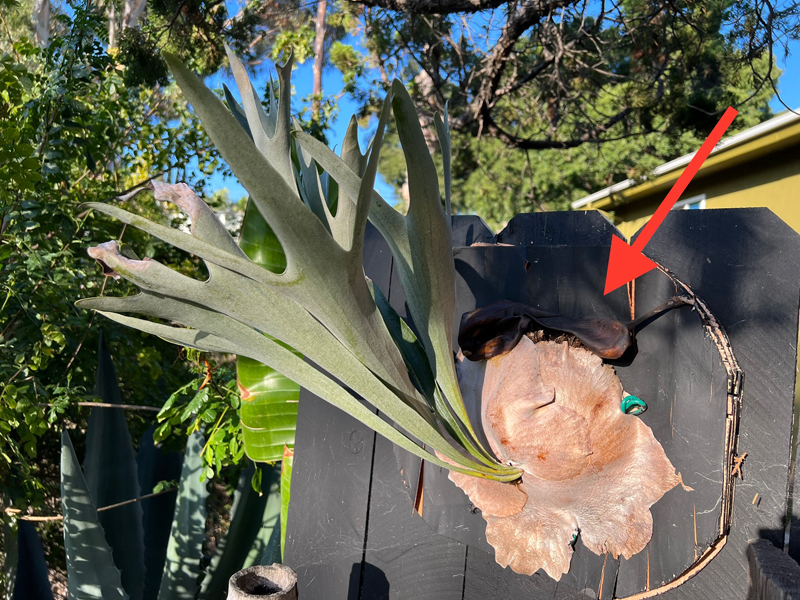
If you look closely, you’ll see the banana peels ‘feeding’ my staghorn fern. Photo: Jim Mumford
If you want to make your own fertilizer, you can make a homemade version of Miracle-Gro type fertilizer with safe household ingredients.
In one gallon of water, add one tablespoon of Epsom salt, one teaspoon of baking soda, and one half-teaspoon of household ammonia.
Too Much Good Stuff
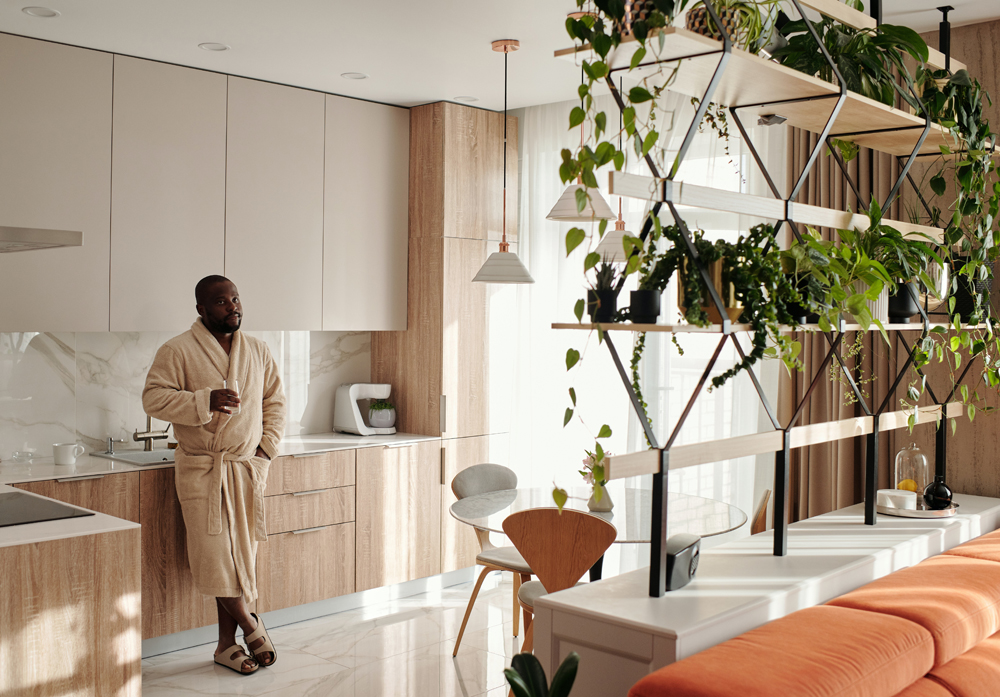
It’s possible to pamper your plants too much by overdoing it with water and fertilizer. Photo: Plava Laguna
Can you overfeed plants? Yes, you can. It’s just like overwatering plants, which is the number one problem we see. It’s just like giving your dog or cat treats to show them you love them. Plants don’t pack on the pounds. Instead, growth might stop, leaves will develop brown tips from fertilizer burn, and they can develop diseases more easily. It’s not healthy in the long run.
For fertilizer burn, completely flush the soil with water to remove the excess fertilizer and salts. You may even need to repot your indoor plant with fresh planting mix. This is another good reason to use commercial plant food at half strength.
Another tip to avoid overfeeding: Leaves can absorb nutrients in what is called a foliar application. We fertilize many of our living walls this way.
Is Fertilizer Necessary For Indoor Plants?
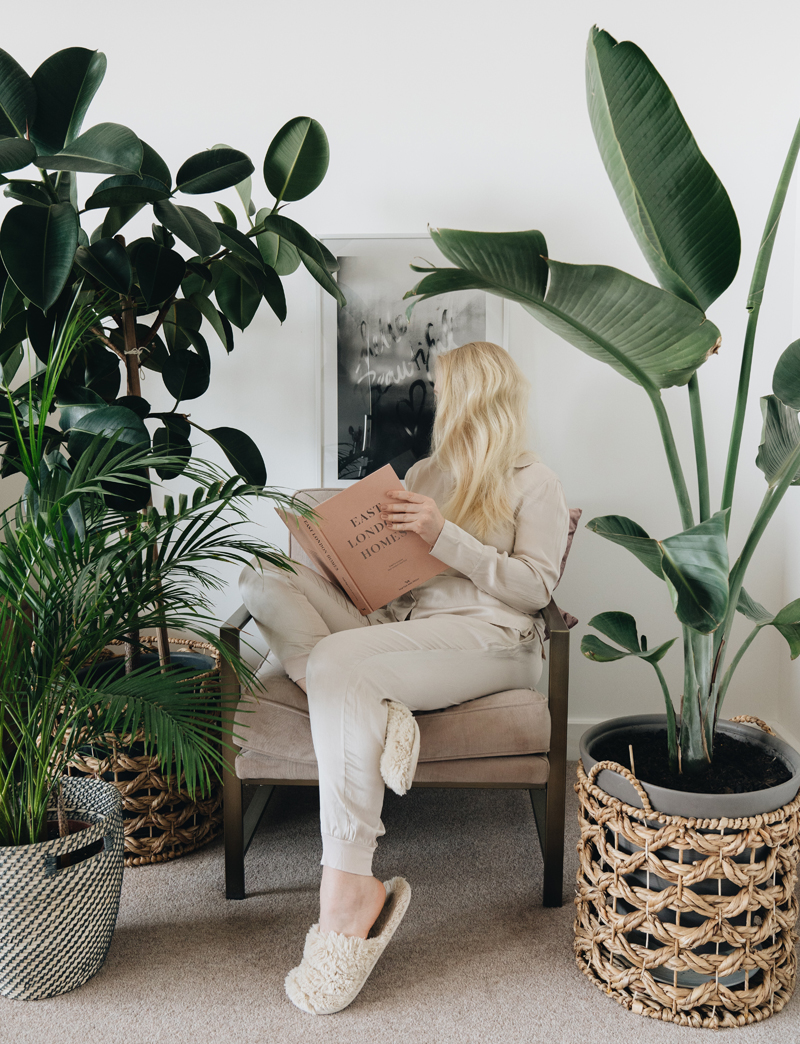
Your plants won’t die without feeding them, but they’ll thrive if you do. Photo: Alleksana . Pixabay
It isn’t absolutely necessary to fertilize your indoor plants until they are fairly old. After five years, unless you transplant into nutrient-rich soil, the nutrients will be depleted. If you feed them on a regular, sensible schedule, your plants will appreciate it and their overall health will be better and stronger
Good Earth Plant Company is always standing by and ready to come to your rescue. We know how to keep indoor plants thriving in any environment under any conditions. We’ve been enriching peoples’ live with plants for more than four decades, and we’re ready for any challenge. Email me at jim@goodearthplants.com – our green thumbs are ready to go to work.

